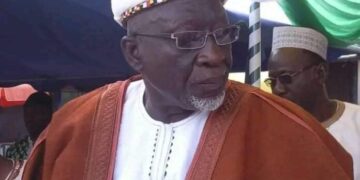
About 2,300 workers of Goldfields Ghana Limited have sued the company over its plans to sack them due to the short lifespan of its Tarkwa mine.
Per the lawsuit initiated on their behalf by the Ghana Mine Workers Union (GMWU) at the Labour Division of the Accra High Court, Goldfields had informed the workers that they would be served with termination letters by yesterday, December 12, 2017.
The notice to serve them with termination letters, the workers said, followed a notice of redundancy issued to them by the company on October 23, 2017, in which it said it was carrying out the exercise due to “the aging fleet of its machinery and the short mine span of the Tarkwa Mine’’.
But the workers are of the view that the reasons given by Goldfields to lay them off do not meet the requirements for redundancy, as stipulated in the Labour Act, 2013 (Act 651).
They also contended that the company unilaterally declared a redundancy exercise when GMWU was still negotiating with it over the form of the redundancy and the category of workers to be affected.
Such action, which they said was taken by Goldfields after the Chief Labour Officer had given the company the green light on December 6, 2017 to go ahead with the redundancy exercise, flouted the express provisions of Act 651 and their collective bargaining agreements.
“By reason of Section 65 of Act 651 and Article 10 of the Collective Agreement, Goldfields cannot unilaterally and without any agreement by the parties declare the plaintiff members (workers) redundant,’’ the workers said in their statement of claim.
As a result of the supposed action of the Chief Labour Office, the workers have named the Attorney-General (A-G) as the second defendant in the suit.
Read also: 2nd Deputy BoG Governor in showdown with govt
What the workers want
Per the writ filed on behalf of the workers by their lawyer, Mr Charles Bawaduah, a former Executive Secretary of the National Labour Commission (NLC), the workers are praying the court to restrain Goldfields from going ahead with the intended redundancy exercise until all the stakeholders involved “have concluded or negotiated on whether the exercise can be averted, and if not, the category of workers to be affected and measures to minimise the impact on workers’’.
They are also seeking a declaration from the court that the redundancy exercise is “unlawful” because the reasons given by the mining giant to lay them off do not meet the “requirements, conditions or grounds for redundancy, as provided by Section 65 of the Labour Act, 2013, Act 651’’.
The workers further want the court to declare that the purported authorisation of the redundancy exercise by the Chief Labour Officer is “illegal, unlawful and null and void’’.
Goldfields response
In a related development, the management of Goldfields Ghana has maintained that what is currently going on at the Tarkwa Mines is not a retrenchment exercise, writes Timothy Ngnenbe, Accra.
At a press conference in Accra on Tuesday, the Executive Vice-President and Head of West Africa, Mr Alfred Baku, said the company was exploring the possibility of shifting from the owner mining module to the contractor mining regime.
He said some workers would be affected if the contractor mining module was adopted but added that a valuation exercise was being carried out to determine the exact number of workers to be affected by the exercise.
“For the record, the workers at our Tarkwa Mines are 2,250 and so we are surprised that some media houses are quoting figures far in excess of 10,000.
“Even if it happens that some workers will go at the end of the valuation exercise, about 85 per cent of those workers will still be recruited by the contractor. So, in effect, only 15 per cent of the number that we will come up with may have to be paid off according to the collective bargaining agreement,” he said.
He said the decision to make a change from its current mining module to the contractor regime was because of the unfavourable factors it envisaged
“As a company, we envisage to go about our activities in a sustainable manner and so we decided to move from one mining module to another, taking into consideration factors such as the fluctuating prices of gold, the cost of labour, reagent cost and the use of technology,” he said.
Mr Baku added that the agitation by the local labour union was quite surprising because the workers were formally notified about the possible changes in the mining regime of the company on March 20, this year.
“The company clearly explained to the union that the effective mine life is five to six years at current rate before the mine goes into a significant ramp down mode as it approaches reserve depletion,” he said.
He maintained that the workers had been engaged in all the dimensions of the change process, noting that the current agitation was because of the natural tendency for every human being to resist change.
Source : graphic.com.gh

































